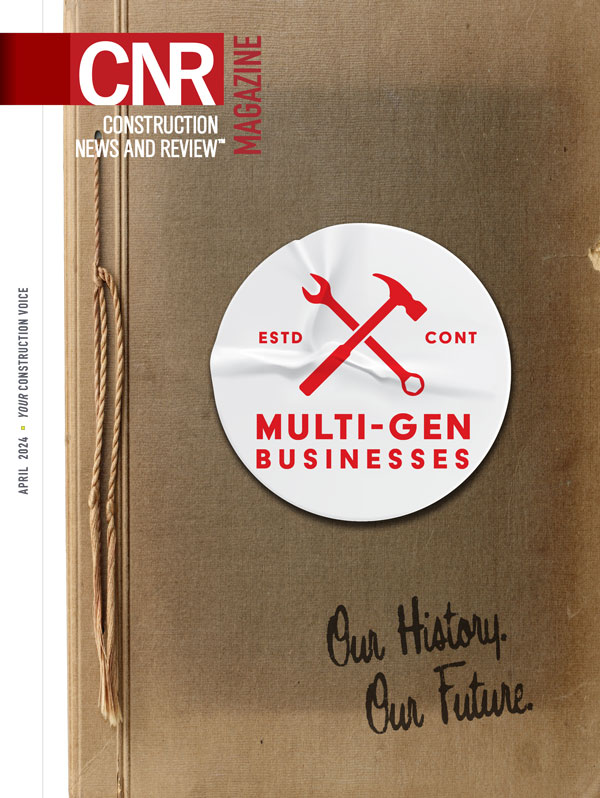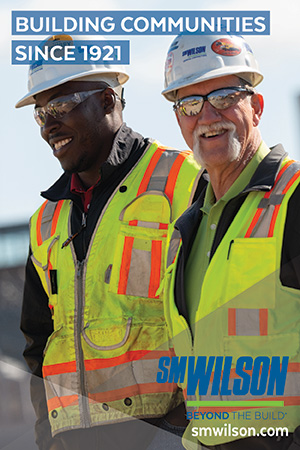Pioneering Protection: How No-Code Apps are Revolutionizing Construction Safety
By CHEYENNE KOLOSKY
The construction industry, known for its brick-and-mortar operations, has consistently adopted technological innovations to enhance efficiency and profitability. Yet, there’s one area that stands to gain significantly from the tech revolution: construction safety. Technology – specifically no-code apps – is paving the way to a safer work environment for all construction workers.
No-code apps have the potential to revolutionize safety management in the construction industry. Leveraging these platforms, construction companies can develop custom applications tailored to their unique needs without the need for traditional software development. Here’s how no-code apps can help construction companies ensure project safety:
- Centralized Safety Reporting: With no-code apps, companies can create centralized systems for reporting and tracking safety incidents in real time. This ensures swift response to any hazards or incidents and helps maintain a consistent record, which can be crucial for compliance and audits.
- Safety Checklists and Audits: Companies can develop tailored safety checklists, ensuring that all safety standards are consistently met across projects. These checklists can be easily updated to reflect new regulations or site-specific needs.
- Training Modules: No-code platforms allow companies to design interactive training modules. Workers can access these modules on their devices, ensuring they are always updated with the latest safety procedures.
- Safety Alerts and Notifications: Using no-code apps, construction companies can send out instant alerts and notifications to workers regarding any imminent hazards, weather warnings, or changes in safety protocols.
- Integration with IoT Devices: No-code apps can be integrated with various Internet of Things (IoT) devices used on construction sites, such as sensors on machinery or wearable safety devices. This enables real-time monitoring and data collection, helping to predict and prevent potential safety issues.
- Inspection and Maintenance Logs: Construction equipment requires regular inspection and maintenance to operate safely. With custom apps, companies can track the maintenance schedules of all equipment, ensuring they are always in safe working order.
- Feedback Mechanism: A dedicated app can facilitate feedback from the ground level. Workers can raise concerns, suggest improvements, or report unidentified hazards, creating a two-way communication channel for safety concerns.
- Data Analytics: Collecting data on safety incidents, near misses, and routine checks can offer valuable insights. No-code apps can be tailored to present this data in intuitive dashboards, helping decision-makers understand trends, areas of concern, and opportunities for improvement.
- Accessibility and Portability: Being mobile-friendly, these apps ensure that all workers, regardless of their location on a sprawling construction site, have access to safety information, protocols, and reporting mechanisms right at their fingertips.
- Documentation and Compliance: Regulations often require construction companies to maintain extensive safety documentation. No-code apps can simplify the process of gathering, storing, and retrieving these documents, ensuring that companies remain compliant with industry standards and regulations.
In essence, no-code apps allow construction companies to create robust, user-friendly safety management systems without the need for extensive software development. This democratization of software design allows even smaller construction companies to deploy sophisticated safety solutions, leveling the playing field and making construction sites safer overall.
The Future of Construction Safety
The construction industry stands at the cusp of a technological revolution, one that promises to redefine its safety standards. As advancements in (AI), IoT and machine learning accelerate, the methodologies and tools available for ensuring safety on construction sites are rapidly evolving. Imagine a world where AI algorithms constantly monitor live video feeds from construction sites. These systems, equipped with advanced recognition capabilities, could instantly spot any safety violations – from a worker not wearing a helmet to more subtle threats like potential structural weaknesses. Upon detection, these systems would not only record the breach but also immediately notify supervisors or other relevant personnel, ensuring swift corrective action.
As with many technological cycles, as these no-code app innovations mature and become more widely adopted, their costs are expected to drop. This democratization of technology means that even smaller construction firms or projects with limited budgets will soon be able to integrate AI, IoT and machine learning into their safety protocols. The outcome? A level playing field where every construction project, irrespective of its size, can benefit from the highest safety standards made possible by the latest technological innovations.
The first step is to identify the data sources available on construction sites. These can include drones capturing aerial imagery, VR systems collecting safety training data, IoT devices monitoring equipment and environmental conditions, and more.
Next, utilize the connectivity capabilities of the no-code platform to integrate with these data sources. Many no-code platforms offer pre-built connectors and APIs to facilitate data ingestion.
Depending on the format of the incoming data, you may need to transform it into a standardized format that can be processed and analyzed within the no-code platform. Then, you can store the ingested data securely within the platform’s data storage system. This central repository ensures that all relevant safety data is readily accessible for analysis and reporting.
Using a no-code platform’s visual development tools, operators on-site can create dashboards and reports that analyze the safety data then set up automated alerts and triggers. They can even develop algorithms or logic within the no-code platform to calculate safety scores based on the combined data from various sources. These scores can provide an overall assessment of safety posture.
By leveraging the real-time capabilities of the no-code platform to continuously monitor safety data from IoT devices, drones, and other sources. This allows for immediate response to safety incidents. Or to integrate with communication tools (e.g., email, SMS) to alert relevant parties when safety issues are detected. Automated notifications can expedite response times. They can even implement machine learning models within the no-code platform to predict potential safety risks based on historical data and real-time inputs from IoT devices and other sources. For compliance purposes, personnel can generate compliance reports and documentation based on safety data, which can be crucial for regulatory and auditing purposes.
Conclusion
The integration of technology into construction safety protocols underscores the industry’s unwavering dedication to safeguarding its workforce. While the means may change, the heart of the mission stays constant: to ensure that every worker steps back into his or her home safely after a day’s work. By merging construction with modern technological solutions, this vision is closer to reality than ever before. If you’re ready to be at the forefront of this evolution, start building your construction safety no-code app with Knack today and be a part of this transformative journey.
Cheyenne Kolosky is director of marketing and demand generation at Knack.
Fresh Content
Direct to Your Inbox

YOUR CONSTRUCTION VOICE IN ST. LOUIS AND BEYOND
Join CNR Magazine today as a Content Partner
As a CNR Content Partner, CNR Magazine promises to support you as you build, design and engineer projects not only in and around St. Louis, but also across the U.S. CNR is equipped and ready to deliver a dynamic digital experience paired with the top-notch, robust print coverage for which you’ve always known and respected the magazine.




